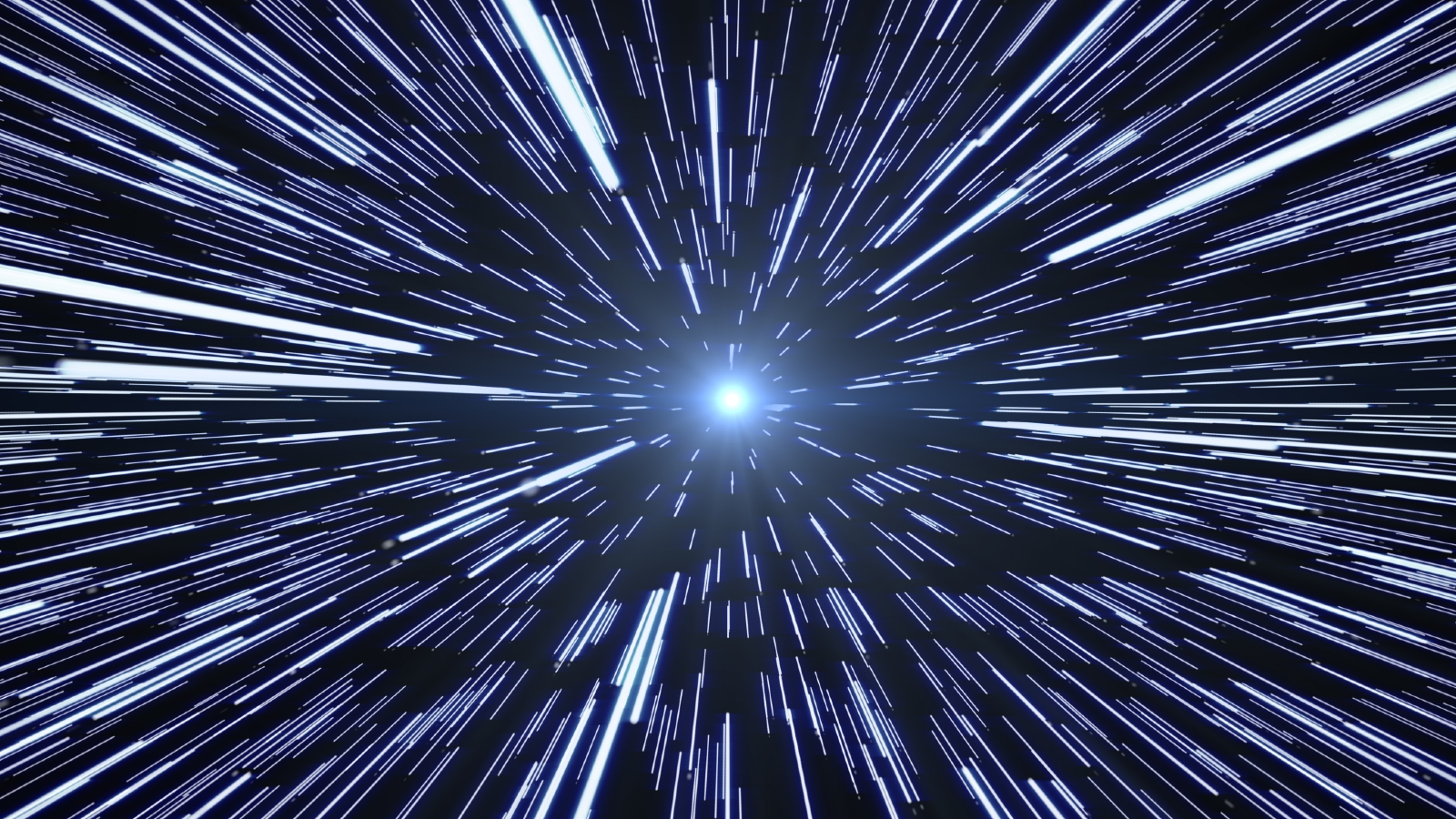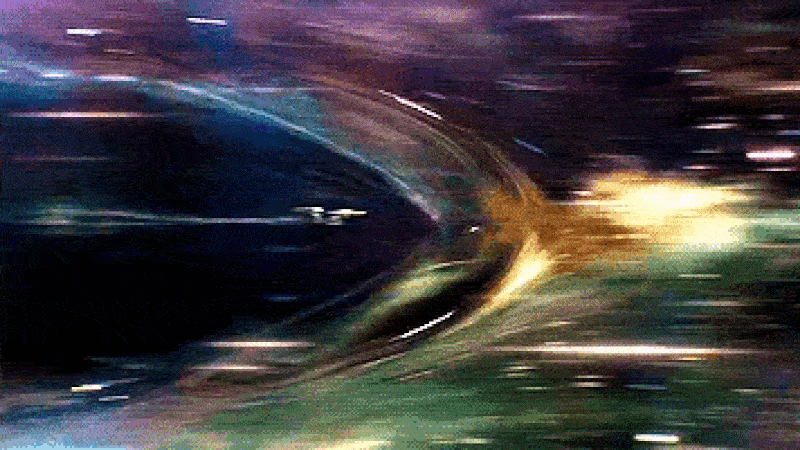Alien 'warp drives' may leave telltale signals in the fabric of space-time, new paper claims
A new paper suggests that we may be able to spot alien spaceships hopping between distant stars using "warp drives" because the sci-fi-inspired technology would give off specific gravitational waves that are unlike anything else we know about.

"Warp drives" used by super-advanced alien civilizations may create specific space-time ripples in their wake that we can spot from Earth, a new paper argues. However, the jury is still out on whether the faster-than-light technology is even possible to create in the first place.
A warp drive is a hypothetical device that enables an object to travel faster than light. In theory, the device creates an invisible sphere around an object, known as a warp bubble, that contracts the space-time in front of it while expanding the space-time behind it. This essentially moves the universe around the object, enabling it to get from point A to B faster than light.
The warp drive concept was first theorized in science fiction books in the 1940s and 1950s but was popularized from the 1960s onwards thanks to the Star Trek franchise.
In 1994, theoretical physicist Miguel Alcubierre proposed the first real-world version of the device, known as an Alcubierre drive. However, while the physics of Alcubierre's concept checks out, it requires the use of large amounts of "negative energy" — energy with a value below zero — which we currently have no idea how to create. This is in addition to other issues, like creating closed space-time loops that violate causality or being able to control a warp bubble once it's formed. However, that doesn't mean we won't eventually figure it all out.
"Some bright soul is going to have a new idea, something quite different from our current understanding of physics," Don Lincoln, a physicist at Fermilab in Illinois, wrote in a 2023 article on the subject. "Then, maybe — just maybe — we will be able to boldly go where no one has gone before."
And while warp drives are a far cry from our current capabilities, that doesn't mean that some super-advanced alien civilization hasn't already come up with the answers.
Related: Sci-fi inspired tractor beams are real, and could solve a major space junk problem
Get the world’s most fascinating discoveries delivered straight to your inbox.
In the new paper, uploaded June 4 to the preprint server arXiv, researchers argued that we could spot warp drives by looking for specific ripples in space-time, known as gravitational waves, given off by warp bubbles. (This paper has not yet been peer-reviewed.)
"Any matter moving around in an irregular way can potentially create gravitational waves," study co-author Katy Clough, a theoretical physicist at Queen Mary University of London, told Live Science in an email. "If you run around in a circle with a friend, you will create gravitational waves too, they are just very small."
Objects traveling at warp speed would not produce any gravitational waves as they zip across the galaxy. However, the creation and subsequent destruction of warp bubbles at the start and end of a journey would produce gravitational waves — especially during the latter phase, which researchers have dubbed a "containment failure."
"The collapse of the warp bubble is quite messy, with the exotic matter that was contained in the wall of the bubble sloshing around and the curvature of space-time that was in the bubble wall also dispersing," Clough said. This would likely create a "strong gravitational wave event," with a specific wavelength, she added.
Astronomers can already spot gravitational waves thanks to state-of-the-art observatories like the Laser Interferometer Gravitational-wave Observatory (LIGO), which is helping scientists tackle some of the biggest questions about phenomena such as wobbling dark matter and black hole collisions. However, warp drives would produce very different gravitational waves to these, which means observatories like LIGO are not fine-tuned to look for them.
To spot warp drives, scientists would have to spend time scouring the cosmos for gravitational waves in different wavelengths without knowing whether there is even anything to find — which could be a massive waste of time and money.
"Whether we see signals is something we can't know until we look," Clough said. "Even though I am skeptical about the likelihood of seeing anything, I do think it is sufficiently interesting to be worth a try."

Harry is a U.K.-based senior staff writer at Live Science. He studied marine biology at the University of Exeter before training to become a journalist. He covers a wide range of topics including space exploration, planetary science, space weather, climate change, animal behavior and paleontology. His recent work on the solar maximum won "best space submission" at the 2024 Aerospace Media Awards and was shortlisted in the "top scoop" category at the NCTJ Awards for Excellence in 2023. He also writes Live Science's weekly Earth from space series.



